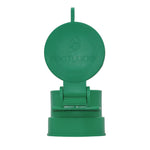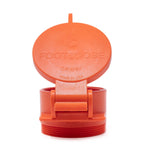You have no items in your shopping cart.
Boondocking is all the rage in the RV and camper van community. Not only can it make a trip more fun and adventurous, but it also allows you to experience remote places where amenities or hookups aren’t available.
Ready to give RV boondocking a shot? Find out what boondocking means, how you can do it safely, how to find a place to boondock, and the best season to enjoy it.
What Is Boondocking?
Boondocking is a form of camping that’s done off the grid without hookups such as water, sewage, and electricity typically available at campgrounds or RV parks. Boondockers park their vehicles in national forests, parking lots, truck stops, rest areas, trailheads, and more without having to pay campground fees. Who doesnt want a free camping site?
Why Do People Boondock?
Boondocking in an RV is cheap and easy. Boondockers forego the convenience of campgrounds to enjoy the freedom of not having to worry about reservation processes, fees, site assignments, crowds, and campground restrictions.
Since you’re camping off the grid and aren’t dependent on the locations of RV parks and developed campgrounds, you can explore remote lands and off-the-beaten-path destinations for days or weeks at a time. Boondocking also gives you a handy way to spend a night pretty much anywhere. When you’re on a tight schedule or en route to a destination, you can park in a free lot overnight to save time and money.
How to Boondock Smartly and Safely
Camping in remote and unfamiliar places without the support we’re used to in modern life may seem intimidating at first. However, it can also be a fun and rewarding experience. Make your trip more enjoyable with these tips:
How to Find a Place to Boondock
While you can’t just park your RV or camper van anywhere overnight (e.g., you aren’t allowed to do so in most national parks), there are still plenty of locations where you can legally boondock. Before you settle into a parking area, look around for signs that explicitly forbid overnight parking.
In urban and suburban areas, you can boondock at parking lots of big-box retailers such as Walmart and Target (stock up on supplies while you’re there!), truck stops or rest areas, and visitor centers. You can also try some hotels, motels, and apartment complexes, although it may take some trial-and-error to avoid getting towed.
When you are in rural areas, trailheads are a good bet. Also, service roads in national forests are favored by many boondockers. Some national forests and Bureau of Land Management (BLM) lands have dispersed camping sites, which are essentially a cleared piece of land on which you can park your RV and stay for as long as you want. Check out the USDA guidelines on how and where to camp in national forests and BLM land.
You can use apps such as Boondocking, the Vanlife, FreeRoam, the Dyrt, and the US Public Lands app to find boondocking sites and national forests. Keep in mind that circumstances may have changed since the information was posted, so do your due diligence when you arrive at the site to make sure you can still boondock safely and legally.
What to Bring on a Boondocking Trip
Prepare to be self-sustaining while you’re boondocking. If you’re overnighting at big-box parking lots, stock up while you’re there. If you’re spending an extended amount of time off the grid or on secluded forest roads, make sure you have all the supplies you need. Besides the usual camping gears, here’s what you should have:
- Power Supply You need electricity to power electronics, lights, water pumps, appliances, etc. Many boondockers install solar panels and store the excess power generated during the day in batteries. You’ll also need an inverter to convert the direct current (DC) to an alternate current (AC) to run larger household appliances such as an electric kettle, fridge, or microwave.
- Water Supply You should have enough water jugs or a large water tank to store ample water for your trip. Many campsites allow you to fill up on potable water for under $10. If you find a boondocking site next to a lake or creek, you can use a sump pump to get water directly from the source and a filter to make the water potable.
- Kitchen and Food A simple propane stove and cooking utensils are essential when you can’t just pick up your smartphone and get tacos from UberEats. If you’re heading to remote places, stock up on produce and non-perishables so you don’t have to interrupt your trip. Boondocking during the winter? Store some perishables outside to minimize energy usage by the fridge while increasing the amount of fresh food available for your stay.
- For Longer Trips… Consider adding a composting toilet, freshwater tank, outdoor shower unit, greywater system, and external batteries or a generator. If you’re visiting remote locations and want to stay connected, research your cell provider’s coverage map. You can purchase a mobile hotspot from a different provider to increase the chances of having cellular reception.

The Best Season for Boondocking
Check the weather conditions of your boondocking destination to make the trip more enjoyable. For instance, heavy rainfall or snowfall can make some forest roads impassable. Also, plan your trips around the seasons—for example, head south during the winter and go north to escape the heat in the summer. This will not only make outdoor activities more enjoyable but also help you save on heating and cooling costs.
Your travel schedule may also depend on your interest. For example, winter sports lovers would want to go north during the winter months. After all, the best season for boondocking is whenever you can enjoy your trip most and can do so safely and responsibly!










